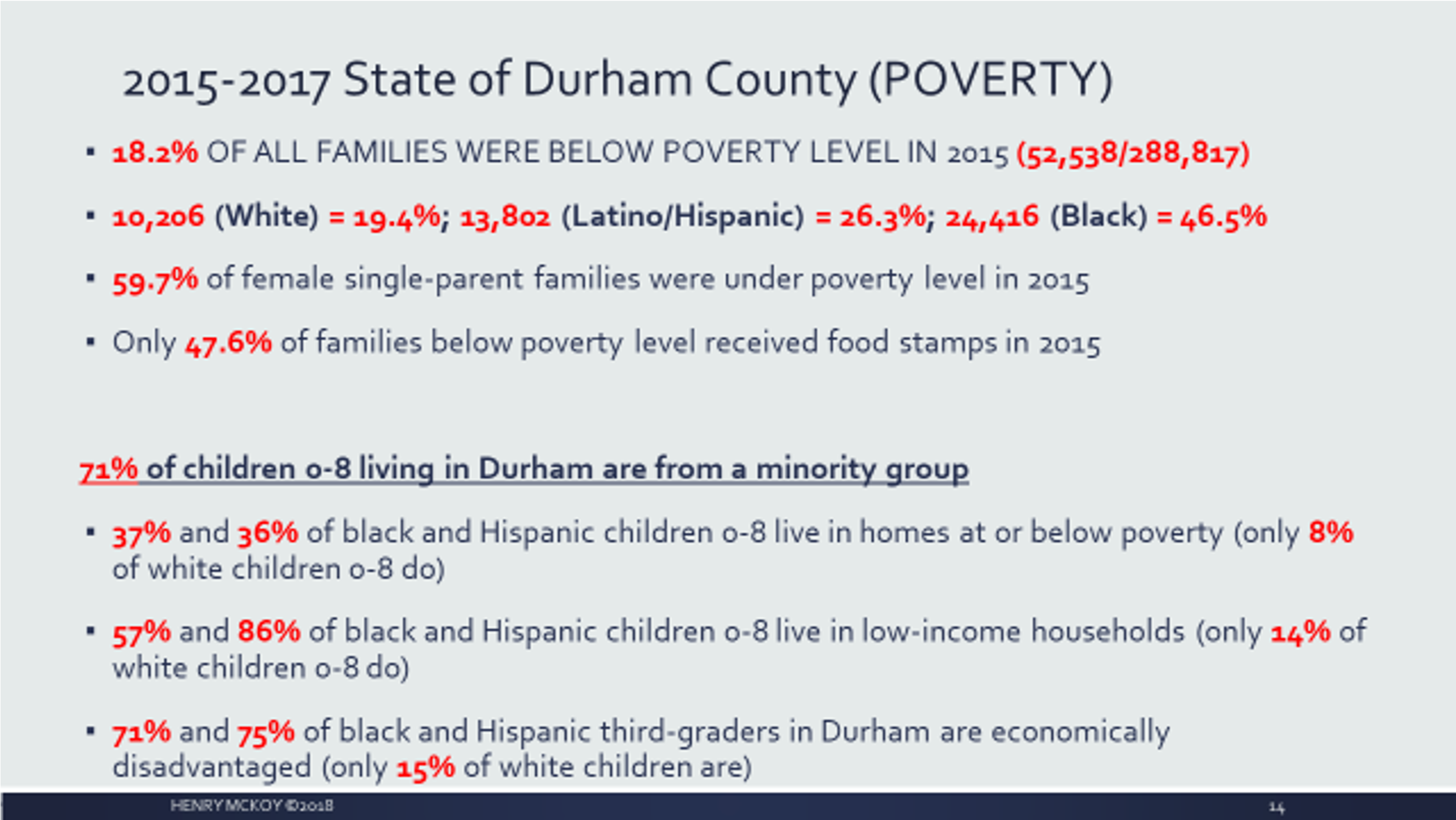DURHAM, NORTH CAROLINA & HISTORIC BLACK HAYTI:
THE RIGHT ENVIRONMENT AND “BLACK-DROP” FOR A GLOBAL RACIAL EQUITY EFFORT
The turn of the 20th century in Durham, North Carolina was flourishing with black-owned businesses, homes, a whole economic infrastructure that was self-sustaining and prosperous. This period of time known as Durham’s Black Wall Street occupied the Hayti neighborhood, once known as the wealthiest and most equitable black business community in America. At 165 years of age, Durham’s Hayti – named for the island-nation of Haiti, the only country in the world ever created by a successful black slave revolt – is today the longest lasting and surviving of the Black Wall Streets in American history.
Durham's Black Wall Street
For 100 years (1867-1967) Durham’s Hayti and Black Wall Street beat the odds and survived nearly unmolested. However, the unforgiving practice of Jim Crow policy and practice sought to redistribute the previously black segregated dollar. So while the black community was still largely unwelcomed in white establishments their dollar was needed. Thus, the growth in the white community was bolstered by social integration, the growth in the black community was thwarted by non-reciprocation.
Hayti plummeted into the same fate of many of America’s urban communities. Disinvestment, poverty, and crime now floods streets that once flourished with black wealth and opportunity.
This problem is not unique to Durham, but it’s here on these historic grounds that big, bold, and innovative ideas can be researched, hatched, developed, incubated, nurtured, financed, and scaled to create a more racially equitable city, state, nation, and world. Durham has the perfect mix of history, culture, modern resources, and will power to incite and lead the needed change for a more racially equitable society in an ever diversifying world. Durham can present a model from which every urban area in America, and beyond, can learn from and adhere to.
THE RIGHT ENVIRONMENT AND “BLACK-DROP” FOR A GLOBAL RACIAL EQUITY EFFORT
The Durham community has been doing the hard work to move to create a racially equitable environment for all residents. With a 2020 population of 287,865, it is the 4th largest city in North Carolina (after Charlotte, Raleigh, and Greensboro) and the 71st largest city in the United States. At this size, not too large and not too small, Durham is the perfect incubator environment for this effort. Durham has no racial majority, though it is a majority BIPOC community. This provides an opportunity to model the future American demography.
Durham has all the amenities to serve as an ideal location for the world’s first Racial Equity Education Research and Development Park. Durham is park of one of the leading academic and research regions in the world – the Research Triangle Park. At 9,000 acres, RTP is the largest research park in the world. RTP is a part of Durham County and offers 70 years of experience in building out a globally known and successful research and development park that can mentor the development of the equity park. Duke, the University of North Carolina at Chapel Hill, and North Carolina State University were all part of the original Research Triangle Park development and vision. At RTP’s inception, society – particularly in the South – was still highly discriminatory. Therefore, North Carolina Central University was not invited to be a part of RTP.
As part of DGEP, not only will NCCU be a part of the equity park’s establishment, it will serve as the park’s intellectual anchor. The first HBCU to serve as the anchor of a global research and development park. However, Duke, UNC, and NC State will join NCCU as academic partners in the DGEP park.
Durham has an international airport (RDU) that would easily connect the DGEP park to the rest of the world. It is a highly respected area of the country and an important gateway to the Southern region of the United States, where racial equity remains an incredible challenge.
Furthermore, Durham has held an undeniable role in innovations at the intersection of race, class, and equity. Durham played a central role in the ending of the US Civil War. Durham also served as the hub of the most successful black economic ecosystem in American history – Hayti. Durham was home to the North Carolina Fund, founded by the late North Carolina Governor Terry Sanford in partnership with the Ford Foundation – at the time the largest foundation in the world. The NC Fund would become the first effort in American history that placed black and white workers together in equal position to address issues at the intersection of race and class. The NC Fund would serve as the model for President Lyndon Johnson’s War on Poverty and some of America’s most enduring policies aimed at pursuing racial equity. With support for DGEP, Durham can continue building on that legacy.

Resources:
https://durhamnc.gov/4092/Racial-Equity-Inclusion-Division
https://durhamnc.gov/DocumentCenter/View/32853/FINAL-REPORT-Durham-Racial-Equity-Task-Force-72220